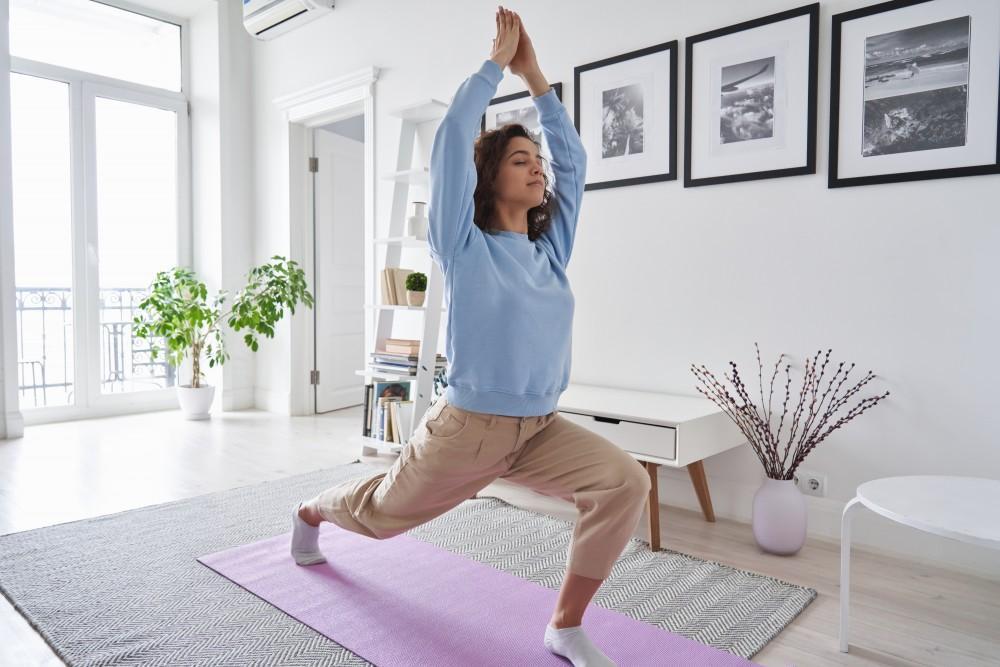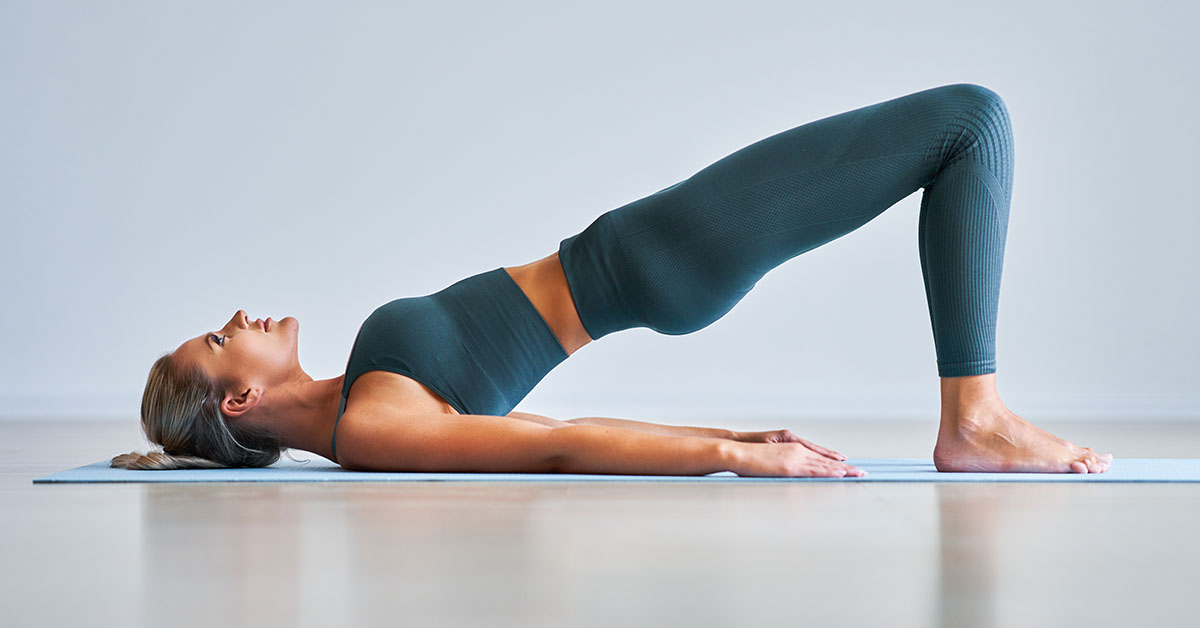Lower Back Pain Exercises - Building Strength And Gaining Relief
While it can be debilitating, there's hope for relief through targeted exercises. Let's take a look at some effective lower back pain exercises designed to not only alleviate discomfort but also to build strength and flexibility in the lumbar region.
Author:James PierceReviewer:Karan EmeryFeb 20, 202446 Shares9.2K Views

Lower back pain is a serious issue affecting millions of people worldwide, often stemming from various factors such as poor posture, muscle imbalances, or injury. While it can be debilitating, there's hope for relief through targeted exercises.
Let's take a look at some effective lower back pain exercisesdesigned to not only alleviate discomfort but also to build strength and flexibility in the lumbar region. By incorporating these exercises into your routine, you can unlock the key to reducing pain and improving overall quality of life.
What Is Lower Back Pain?
Lower back pain refers to discomfort, pain, or stiffness that is localized in the area between the ribs and the pelvis, commonly known as the lumbar region. It is one of the most prevalent medical complaints, affecting people of all ages and backgrounds.
The lower back, or lumbar spine, is a complex structure consisting of vertebrae, intervertebral discs, spinal nerves, muscles, ligaments, and tendons. The pain can vary widely in intensity, ranging from a dull, persistent ache to sharp, shooting pain.
Causes Of Lower Back Pain
Lower back pain can have various causes, ranging from mechanical issues to underlying medical conditions. Here are some common causes of lower back pain:
- Muscle strain -Overexertion or improper use of the muscles in the lower back, such as lifting heavy objects or sudden twisting movements, can lead to muscle strain and subsequent pain.
- Ligament sprain -Injuries to the ligaments that support the spine can cause pain. This may occur due to sudden movements or improper lifting techniques.
- Herniated disc -When the soft, gel-like center of an intervertebral disc protrudes or ruptures, it can put pressure on nearby nerves, leading to lower back pain. This condition is also known as a slipped or ruptured disc.
- Degenerative Disc Disease (DDD) - Over the years, the discs between the vertebrae in your spine can wear down naturally. These discs act like cushions, and as they wear, it can lead to discomfort, swelling, and the discs becoming thinner. This wear and tear can cause pain, especially in the lower back or neck, and sometimes it may result in shooting pain down the arms or legs.
- Spinal stenosis- Picture your spinal canal like a tunnel that houses your spinal cord. Spinal stenosis is like the tunnel narrowing down over time, putting a squeeze on your spinal cord and nerves. This narrowing can cause pain and numbness, often in the lower back and legs.
- Osteoarthritis- Joints in the spine have cartilage, which is like a cushioning material. With osteoarthritis, this cartilage breaks down, leaving the bones to rub against each other. This rubbing causes pain and stiffness, making movement less smooth.
- Scoliosis- Imagine your spine from the back - instead of being straight, it curves sideways, forming an 'S' or 'C' shape. This curvature can lead to uneven pressure on the discs and joints, causing pain. It's like trying to stack blocks, but some are taller on one side, causing an imbalance. Scoliosis can also affect posture and sometimes lead to muscle imbalances and discomfort.
Risk Factors
- Age - As we age, the spine undergoes natural wear and tear, including changes in the discs and joints. The risk of experiencing low back pain tends to increase with age due to the cumulative effects of aging on the spine.
- Physical fitness level - Lack of regular exercise and poor physical fitness can lead to weakened muscles and inadequate support for the spine. Individuals with low physical fitness may be more prone to muscle imbalances, poor posture, and increased vulnerability to low back pain.
- Weight - Excess body weight places additional stress on the spine and its supporting structures. Being overweight or obese can contribute to the development or exacerbation of low back pain, as the spine has to bear the extra load.
- Occupational factors - Jobs that involve heavy lifting, repetitive movements, or prolonged periods of sitting can strain the lower back. Certain occupations, such as construction work or desk jobs, may increase the risk of low back pain due to the physical demands or sedentary nature of the work.
- Genetics - Some individuals may be genetically predisposed to conditions that affect the spine, such as degenerative disc disease or certain structural abnormalities. Genetic factors can influence the likelihood of developing spine-related issues that contribute to low back pain
- Psychosocial factors - Stress, anxiety, and depression can contribute to muscle tension and may influence how individuals perceive and cope with pain. Psychosocial factors can exacerbate or contribute to low back pain, especially in chronic cases.
- Smoking - Smoking can impair blood flow to the spinal discs and reduce their ability to receive nutrients. Smokers may have an increased risk of experiencing low back pain, and the healing process for back injuries may be slower.
- Posture - Poor posture, both during activities and while sitting, can strain the muscles and structures of the lower back. Maintaining improper posture over time can contribute to muscle imbalances and increase the risk of developing low back pain.
- Previous injuries - Previous injuries to the spine or lower back can leave lasting effects and increase susceptibility to future pain. Individuals with a history of spine-related injuries may be more prone to recurrent low back pain.
- Lack of ergonomics -Improper ergonomics at home or in the workplace can contribute to poor body mechanics and strain on the lower back. Inadequate support or incorrect positioning during daily activities may increase the risk of developing low back pain.
Lower Back Pain Exercises
- Pelvic tilts - Lie on your back with knees bent and feet flat on the floor. Lift your hips towards the ceiling, creating a straight line from your shoulders to your knees. Hold for a moment before lowering back down.
- Bridge exercises - Start on your hands and knees in a tabletop position. Arch your back up like a cat, then dip it down, lifting your head and tailbone towards the ceiling.
- Cat-cow stretch - Kneel on the floor, sit back on your heels, and reach your arms forward on the ground. Gently lower your chest toward the floor, stretching your lower back.
- Child's pose - Sit on the floor with your legs extended. Hinge at your hips and reach forward towards your toes, keeping your back straight.
- Seated forward bend - Lie on your back with knees bent and feet flat on the floor. Cross your arms over your chest and lift your shoulders off the ground, keeping your lower back on the floor.
- Partial crunches - Lie on your stomach with arms extended in front of you. Lift your arms, chest, and legs off the ground simultaneously, engaging your lower back muscles.
- Superman exercise - Lie on your back and bring one knee toward your chest, holding it with both hands. Hold the stretch for 15-30 seconds and switch legs.
- Knee-to-chest stretch - Lie on your back with knees bent and feet flat on the floor. Tighten your abdominal muscles and push your lower back into the floor. Hold for a few seconds and then release.
Lower Back Pain Exercises - FAQ
How Do You Get Rid Of Lower Back Pain Fast?
A person can use hot and cold packs to reduce swelling and soothe the pain. People use ice packs directly after an injury, such as a strain. Applying an ice pack wrapped in a towel directly to the back can reduce inflammation. Cold may provide a numbing effect for sudden, intense back pain.
How Do I Relax My Lower Back?
Gently bend forward at your hips, bringing your belly down to your thighs. Keeping your back straight, grab the towel to help you bring your belly closer to your legs. Stretch until you feel mild tension in your lower back and the back of your leg. Hold for 10 seconds, rest for 30 seconds, and repeat 3 times.
Can Lower Back Pain Be Fixed With Exercise?
Although exercise programs don't always make back pain go away completely, they often relieve the pain and improve your overall fitness and mobility. Research has also found that doing regular exercise can reduce the frequency of recurring back pain attacks by almost half.
Final Thoughts
Tackling lower back pain through exercises is like giving our backs a friendly boost towards feeling better. We explored a bunch of exercises, from gentle stretches to core-strengthening moves, all aimed at making our lower backs stronger and more flexible. Remember, before diving into these exercises, it's a good idea to chat with a healthcare pro to make sure we're picking the right ones for our individual needs.

James Pierce
Author

Karan Emery
Reviewer
Latest Articles
Popular Articles
